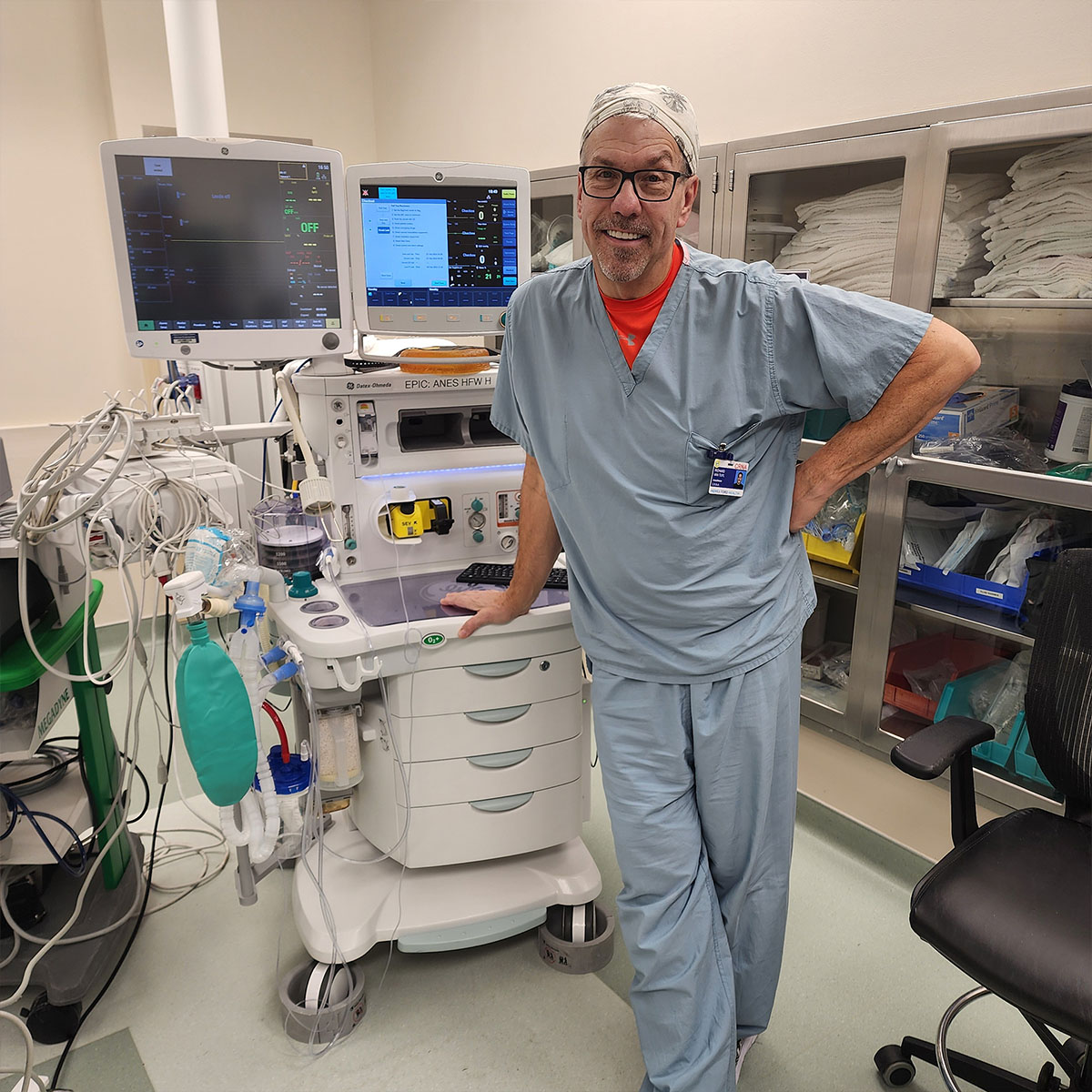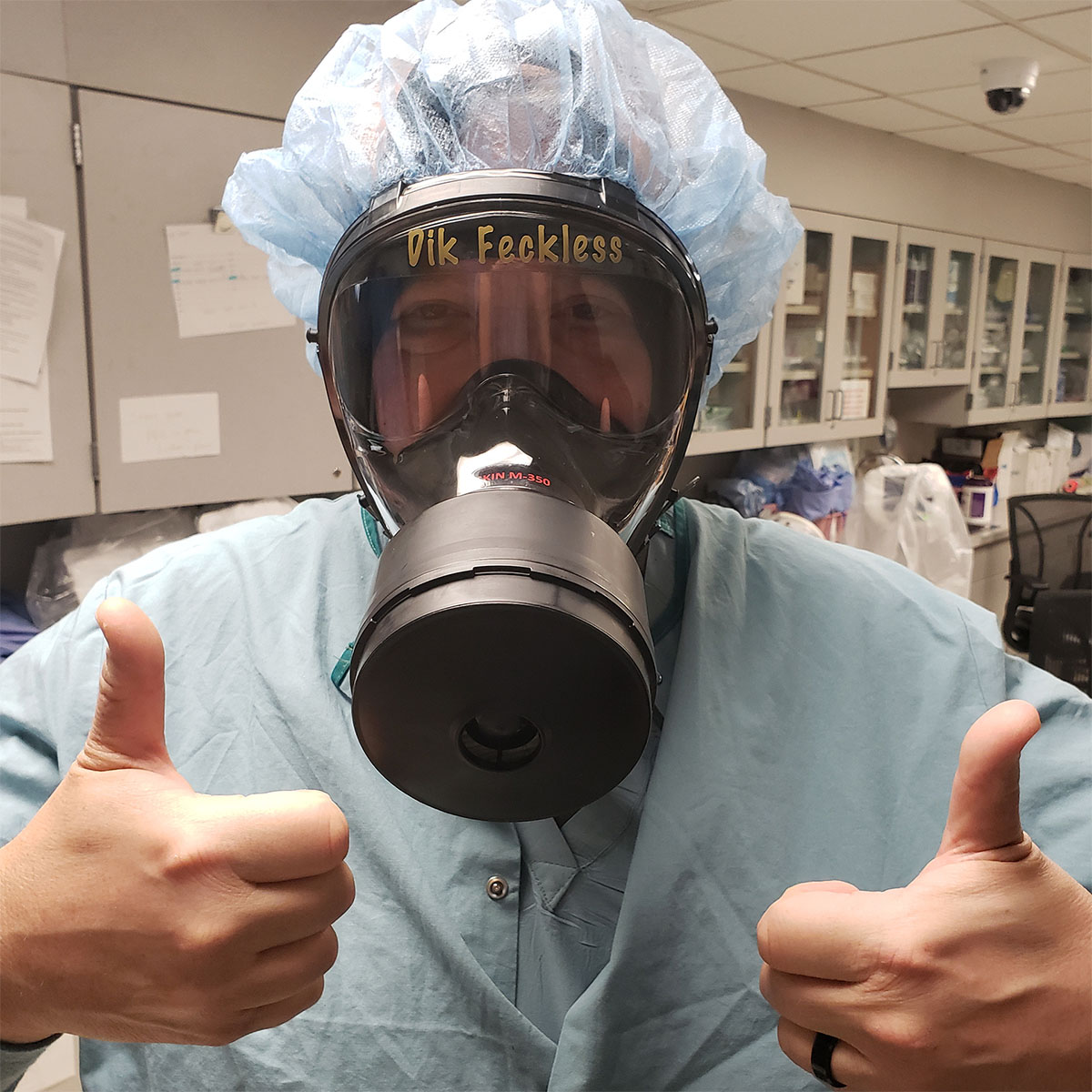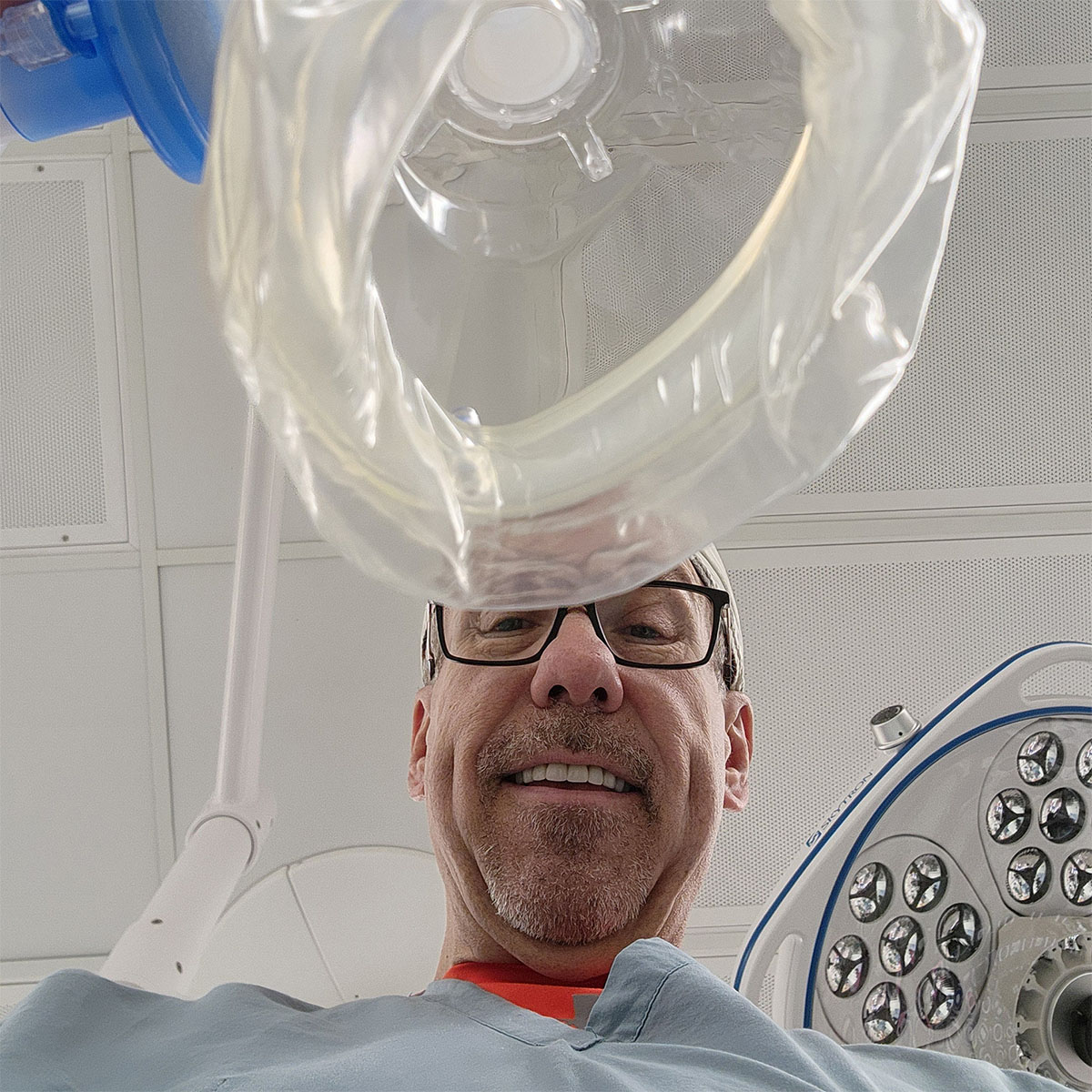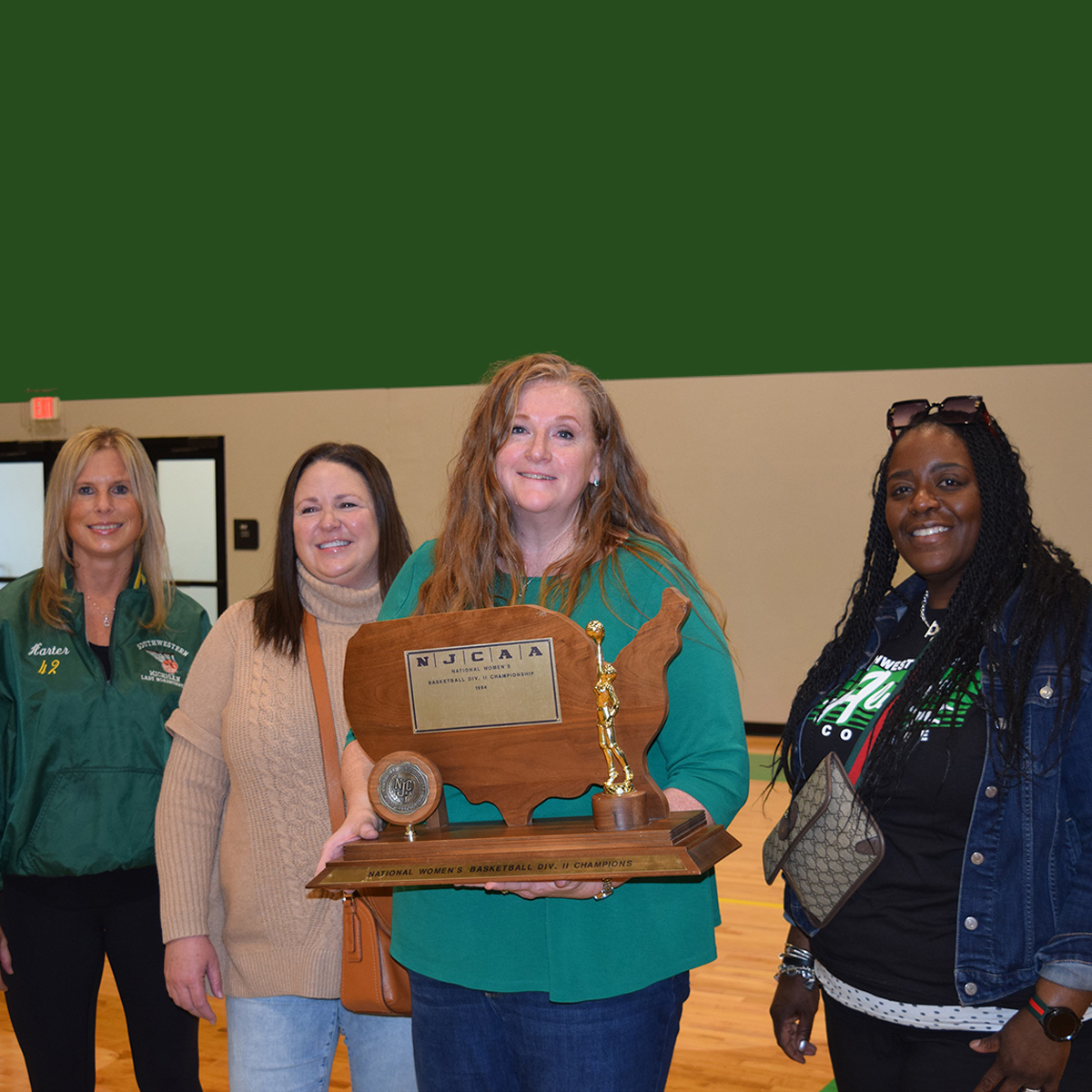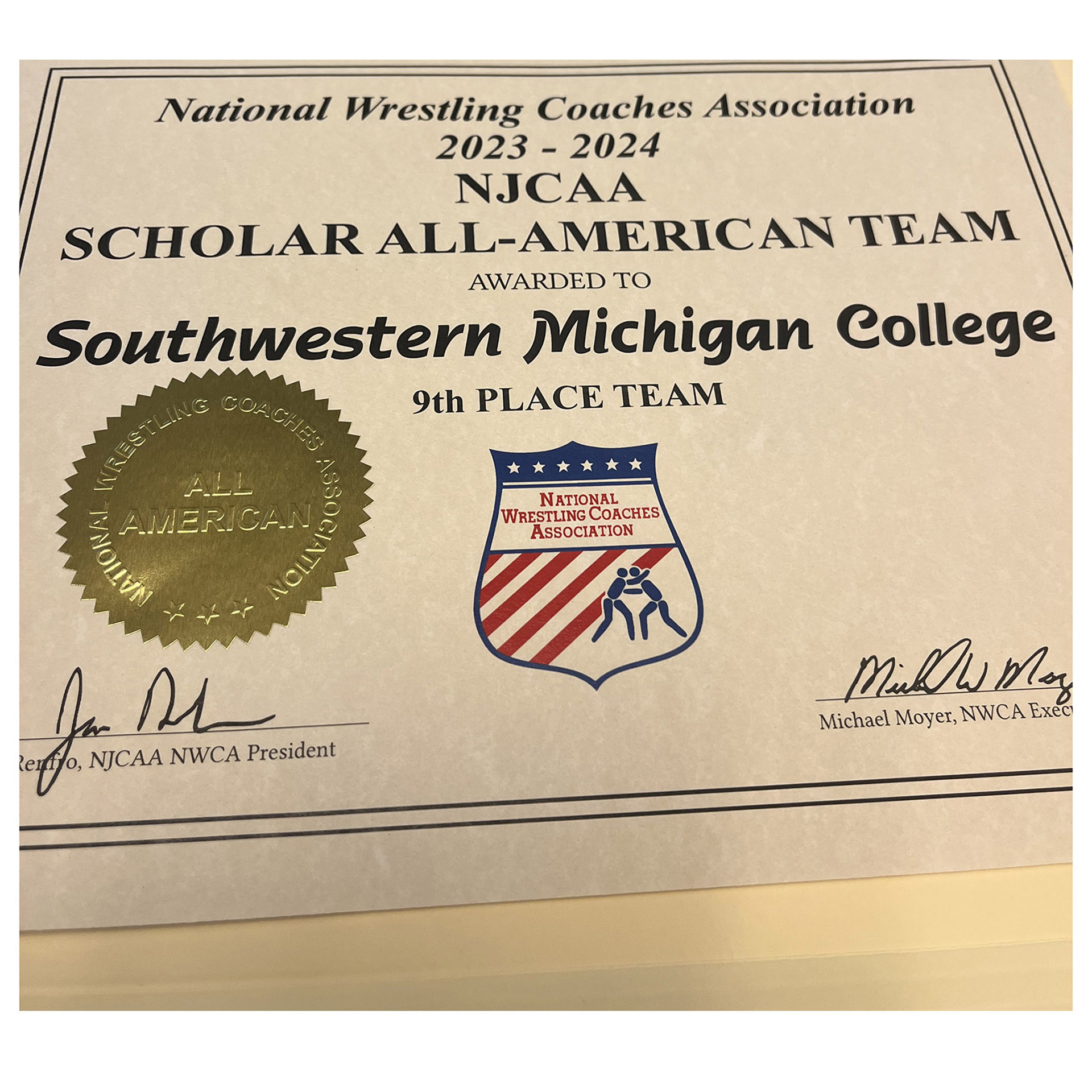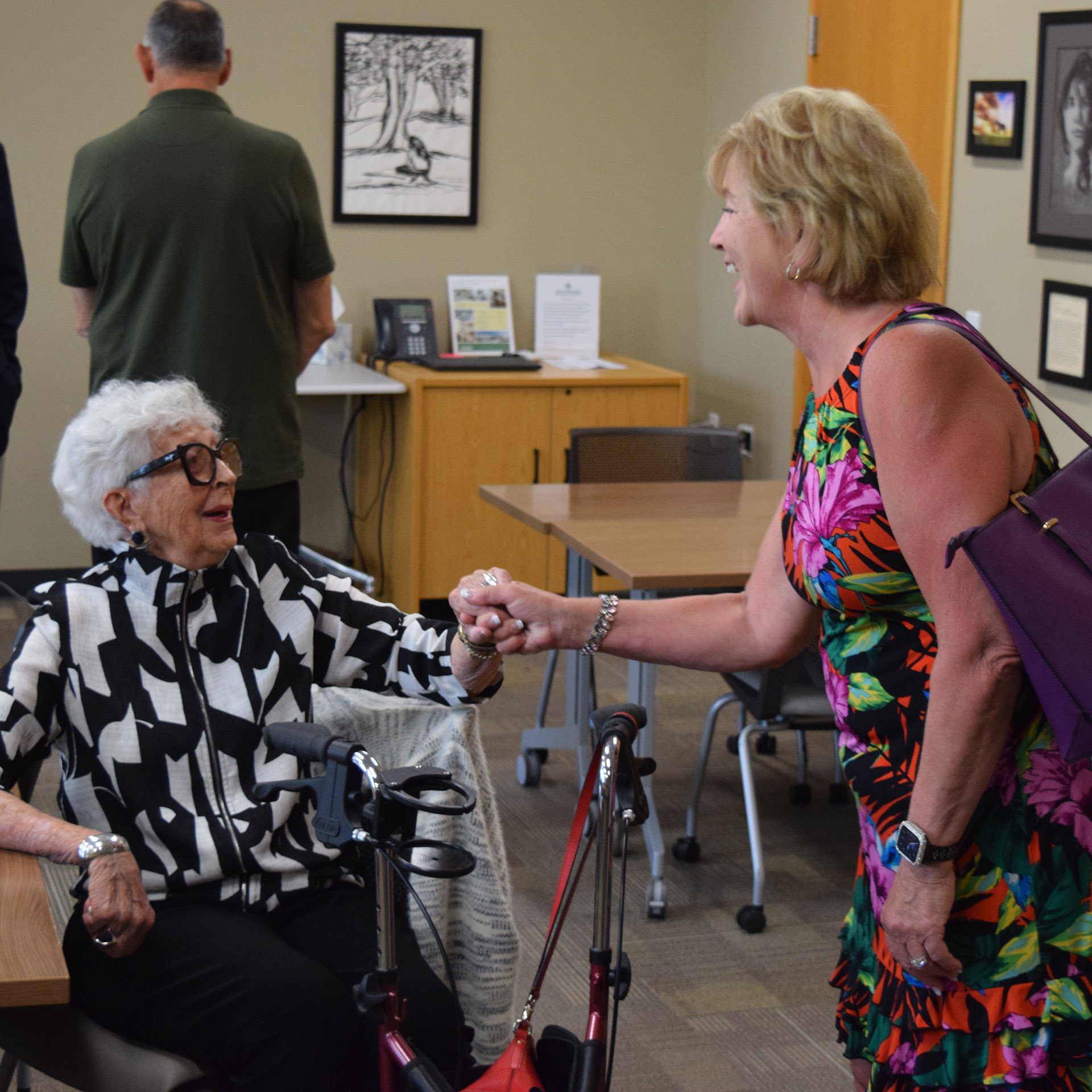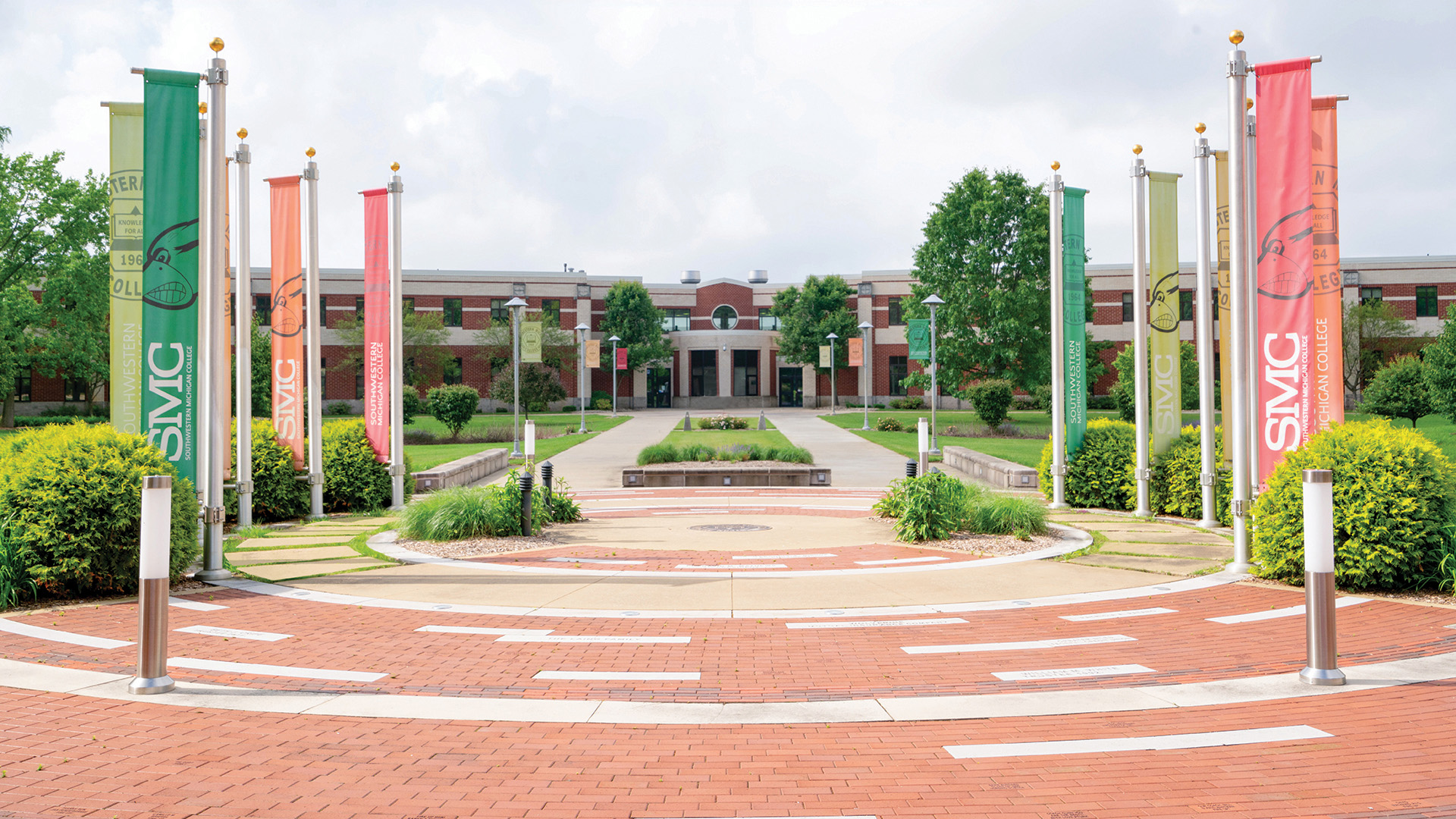
News
-
RECENT NEWS
28 Attend First SMC Science Fair Camp
1980 SMC Nursing Graduate Left Cardiology for Anesthesiology
SMC Celebrated 30th Anniversary of Women's Basketball Champions
SMC Wrestling Makes NJCAA Top 10 for Academics
SMC ETS Theatre Camp Stages Ghoulish Comedy at Beckwith June 28-29
Thelda Mathews Honored as an SMC Founder
1980 SMC Nursing Graduate Left Cardiology for Anesthesiology
Published on July 11, 2024 - 9 a.m.
Rick VanTuyl grew up in Dowagiac, watching Original Road and Trail Race (now Steve’s Run) runners stream past his house at the foot of Wilbur Hill Road.
VanTuyl, 64, graduated from Union High School in 1977 and earned his Southwestern Michigan College associate degree in nursing in 1980, the only man of five who made it to the finish line.
Flash forward four decades and VanTuyl is at the pinnacle of his profession as a nurse anesthetist for Henry Ford Health since 2002. Henry Ford, established in 1915, is headquartered in Detroit and has more than 30,000 employees and six hospitals.
VanTuyl lives six miles from Henry Ford Wyandotte Hospital in an apartment in Brownstown Charter Township, Wayne County. He previously lived in Riverview. The former cardiac nurse has been in the Detroit area for 40 years.
He and his wife, Laura, a respiratory therapist he married in 2019, is his “eating adventures companion.” Others might call them gourmands for the pleasure they take in fine dining.
His social media posts about meals only tell part of the story, however.
“Naples, Fla., has unlimited amounts of great restaurants,” he said. “I microwave,” he assesses his own culinary skills. “I’m not even good at grilling steak. I’m good at chicken thighs because I do those for my diet, and I do diet because if we go out to eat all the time like when we’re in Naples, I’d weigh 300 pounds. I don’t post photos of 10 oz. of chicken thighs on a huge bowl of salad with diet dressing.”
From Schato to CRNA
VanTuyl took three years to graduate from SMC because he started in pre-law, learning “I completely hated accounting.”
His entry into nursing involves a name familiar to older local residents. Schato Nursing Home was located where The Timbers of Cass County is today on Colby Street.
“I didn’t make the basketball team my junior year,” he recalled, “so I got a job in the kitchen at Schato (pronounced chateau). I loved working with those people. Once I turned 17, I became an orderly. Bottom line, I was really good at it. It was ’78 and I’d done a year at SMC, but I had no thoughts of anesthesia at that point, even though nurse anesthetists have been around longer than anesthesiologists, which takes M.D. or D.O. training. They’re doctors first. Nurse anesthetist is now a Ph.D. program. I don’t have a (doctorate), I have a master’s” in nurse anesthesia in 1995 from University of Detroit Mercy, as well as a 1991 bachelor’s degree in nursing from Oakland University.
“I basically got the bachelor’s degree so I could go to anesthesia school. I worked and trained at Henry Ford downtown, where they also had a residency program. We did all the same stuff the residents did. In terms of anesthesia knowledge, we have to be able to practice independently — in smaller areas especially. My nursing background is still very important in the performance of my job. My cardiology background is a big advantage. I thought I was going to love doing heart surgeries, but bypasses are formulaic. I did a lot of heart transplants when I was at Henry Ford, as well as lungs, livers and kidneys.”
“I loved being a cardiac intensive care nurse. I worked the midnight shift. But I decided to go to anesthesia school to be able to put my kids through school and to afford Red Wings season tickets. It wasn’t a noble cause,” he chuckled. “By the time I was done, we had Tigers and Lions season tickets, too. It was a great bonding experience with my daughters going to all the games.”
One daughter, Stephanie, 38, is a nurse practitioner in dermatology. She lived in Texas, where her husband worked for the U.S. Border Patrol before joining ATF (Bureau of Alcohol, Tobacco, Firearms and Explosives) in Detroit. Michelle, 35, teaches in River Rouge. He has two grandchildren and two step-grandchildren.
CRNAs are specialized nurses trained in pain relief and anesthesia delivery. They decide on patient care plans independently or alongside other medical professionals. As advanced practice registered nurses (APRNs), CRNAs have the highest level of nursing education.
Becoming a CRNA takes seven to 10 years, including clinical experience working as an RN in an ICU or a critical care department. Beginning in 2022, aspiring CRNAs could plan on spending two to three years to complete the required DNP or DNAP degree after earning their BSN and RN license.
When VanTuyl finished nursing school in 1980, “I was playing in a band with Mike Konopinski, Steve Gajewski and Todd Wilson. We all moved to Kalamazoo. Mike and Steve were going to Western. I worked my first nursing job at Bronson Hospital. My first wife, whom I married in ’83, was a nursing student there. That’s where we met. She was from Allen Park” in Wayne County. “That’s how I got here. Where I work was Wyandotte General, but Henry Ford has bought up a lot.”
Wyandotte is one of 18 Wayne County cities and townships south of Detroit on the western shore of the Detroit River, known informally as “Downriver.”
Laura “was first to work at Henry Ford,” he said. “I worked at Wyandotte from 1985-’87 in the intensive care unit, so I went to Henry Ford to the cardiac ICU for eight years, then to anesthesia school. Most people go now because it’s so lucrative. It will be 30 years next year that I’ve been a nurse anesthetist. We make more than a lot of doctors — especially the poor guys who have to pay their own malpractice insurance. But you’ve got to remember, we’re doing surgeries, and that’s where money comes into hospitals.”
“It’s different in other hospitals, but where I’m at, an anesthesiologist covers four operating rooms. They see the patient pre-op, do the body systems checklist and assess their airways. We look at what they’ve assessed and come up with a plan on how we’re going to take care of the patient. I’ll visit the patient, explain who I am, ask them if they have any questions.
“They won’t remember anything from that pre-op room until they wake up in recovery. The circulating nurse and I take them back to their room. At our place, we do the introduction of the anesthesia together with the anesthesiologist. I call the anesthesiologist when they’re all hooked up to the anesthesia machine, blood pressure, heart rate, EKG, all that. We push the drugs, they go to sleep, I’ll put a breathing tube into their windpipe and any other tubes we need to put in and the surgeons and residents come in. When they wake up, I take the breathing tube out and take them to recovery. We do sedation, epidurals for labor and delivery, anesthesia for MRIs or cardiac catheters. In the cath lab they also put in pacemakers, implantable defibrillators for people with arrythmia problems.
“Usually, I do 10-hour shifts” he said. “I work with our fastest general surgeon, so eight to 10 cases a day. Laparoscopic gall bladder removals, bowel resections, mastectomies. I work with him two days a week. The other two days I work with a spine surgeon for spinal fusions, things like that.”
Laparoscopy uses a thin lighted tube with a video camera inserted into an incision in the belly.
Snowbirds for now
VanTuyl’s plan had been to retire to the house in Naples his parents bought some 30 years ago (his father worked for James Heddon’s Sons), but then his daughter moved home from El Paso with his grandchildren “so we’re not going anywhere. We’re snowbirds. At this rate, I’ll probably work until I’m 70.”
The Wednesday The Southwester spoke to VanTuyl was his day off from Henry Ford, so he worked at Southgate Surgery Center doing anesthesia for 18 cataract surgeries and six colonoscopies.
“That’s a good gig for me because I get paid by the case as an independent contractor,” VanTuyl said. “At the hospital I’m paid by the hour as an employee.”
VanTuyl said the last time he visited SMC’s campus was when he pinned his sister’s son, who graduated from Edwardsburg in 2006.
